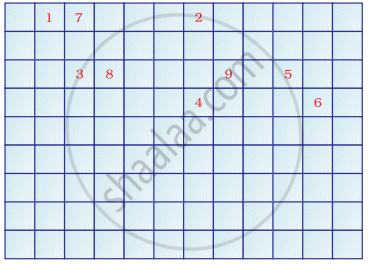Advertisements
Advertisements
Question
Match the following
| 1. | Galvanisation | Noble gas elements |
| 2. | Calcination | Coating with Zn |
| 3. | Redox reaction | Silver-tin amalgam |
| 4. | Dental filling | Alumino thermic process |
| 5. | Group 18 elements | Heating in the absence of air |
Solution
| 1. | Galvanisation | Coating with Zn |
| 2. | Calcination | Heating in the absence of air |
| 3. | Redox reaction | Alumino thermic process |
| 4. | Dental filling | Silver-tin amalgam |
| 5. | Group 18 elements | Noble gas elements |
APPEARS IN
RELATED QUESTIONS
An element P (atomic number 20) reacts with an element Q (atomic number 17) to form a compound. Answer the following questions giving reason:
Write the position of P and Q in the Modern Periodic Table and the molecular formula of the compound formed when P reacts with Q.
Write the electronic configuration of two elements X and Y whose atomic numbers are 20 and 17 respectively. Write the molecular formula of the compound formed when element X reacts with element Y. Draw the electron-dot structure of the product and also state the nature of the bond formed between both the elements.
State whether the following statement is true of false:
The elements in a group have consecutive atomic numbers.
An atom has the electron structure of 2, 7.
(a) What is the atomic number of this atom?
(b) To which of the following would it be chemically similar?
7N, 15P, 17Cl, 18Ar
(c) Why would you expect it to be similar?
Atoms of eight elements A, B, C, D, E, F, G and H have the same number of electron shells but different number of electrons in their outermost shells. It was found that elements A and G combine to form an ionic compound. This ionic compound is added in a small amount to almost all vegetables and dishes during cooking. Oxides of elements A and B are basis in nature while those of elements E and F acidic. The oxide of element D is, however, almost neutral. Based on the above information, answer the following questions:
(a) To which group or period of the periodic table do these elements belong?
(b) What would be the nature of compound formed by a combination of elements B and F?
(c) Which two of these elements could definitely be metals?
(d) Which one of the eight elements is most likely to be found in gaseous state at room temperature?
(e) If the number of electrons in the outermost shell of elements C and G be 3 and 7 respectively, write formula of the compound formed by the combination of C and G.
Alkaline earth metals have valency 2. This means that their position in the modern periodic table is in ______.
Classify the following elements into Metals and Nonmetals.
S, Mg, Al, P, N, Na.
An element X combines with oxygen to form an oxide XO. This oxide is electrically conducting. Write the formula of the compound formed when X reacts with chlorine.
Complete the following cross word puzzle
Across:
(1) An element with atomic number 12.
(3) Metal used in making cans and member of Group 14.
(4) A lustrous non-metal which has 7 electrons in its outermost shell.
Down:
(2) Highly reactive and soft metal which imparts yellow colour when subjected to flame and is kept in kerosene.
(5) The first element of second Period
(6) An element which is used in making fluorescent bulbs and is second member of Group 18 in the Modern Periodic Table
(7) A radioactive element which is the last member of halogen family.
(8) Metal which is an important constituent of steel and forms rust when exposed to moist air.
(9) The first metalloid in Modern Periodic Table whose fibres are used in making bullet-proof vests

How are elements grouped into various families in the periodic table?
